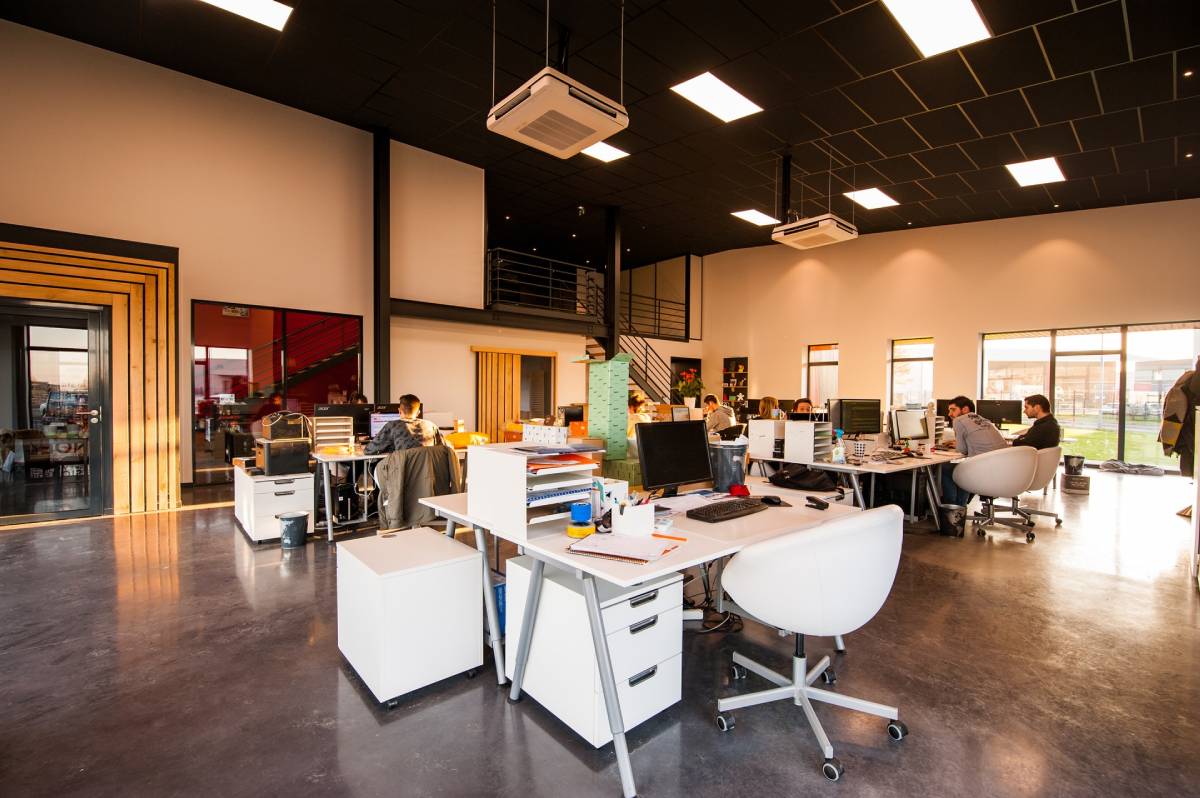
The Benefits of Hybrid Work Models for Employers & Employees
The disruption to work environments all across the country over the last couple years has afforded businesses the opportunity to observe the benefits of in-office versus remote working environments. As a result, many businesses are beginning to shift to hybrid work models which incorporate the benefits of both.
Below, we explore the many benefits–for employers and employees alike–of hybrid work models.
Table of Contents
- What is a Hybrid Work Model?
- Collaborative & Independent Work
- Home Emergencies Have Reduced Impact on Work
- Improved Personal Development Time
- Employees Work Independently, While Supervisors Can Still Intervene
- Time Lost to Commutes Used More Productively
- Larger Talent Pools to Hire From
- Employers Can Reduce Real Estate Costs
What is a hybrid work model?
Hybrid work models vary significantly from business to business. For some businesses, it simply means that all employees spend some time in the office, and some time working from home. Employers may mandate exactly how much time employees spend in the office, which allows them to make better use of office space and avoid under- or over-utilizing available space.
Other businesses have taken a much more versatile approach, with employees filling certain positions always working in-office, some working in-office part of the week, and others being fully remote.
Offices which utilize some version of a hybrid work model often have a few dedicated offices for executives and those who are consistently in the office, with much of the office footprint being dominated by flexible space with hot desks, where any employee can quickly connect a laptop to a workstation and start working. When employees are done utilizing a workspace, they remove their equipment and leave it in a state suitable for another employee to utilize.
Employees realize the benefits of working collaboratively and working independently.
One of the issues that became immediately apparent to offices which went fully remote is that collaborative work suffered. Projects where employees had previously worked in tandem instead were handed from employee to employee, like cars on an assembly line.
This approach works fine when the product is consistent and never-changing. But for work which required creativity and problem solving, productivity (and morale) tanked.
Hybrid work offers a “best of both worlds” type solution. Collaborative projects can be tackled together in the office, where team members can bounce ideas off of one another, delegate tasks on the fly according to team members’ strengths and weaknesses, and take a far more agile approach to finding solutions and delivering optimal results.
On the other side of the coin, when employees have tasks which require hours of dedicated focus, the dynamism of a shared work environment can undermine progress and productivity.
Thus, a hybrid approach allows employees to optimize performance by getting face-to-face interaction where needed, and to stay home, put their heads down, and focus when that is required.
Workers have more opportunities to balance home responsibilities with partners, with less impact on productivity.
We often think about employees being distracted when working at home. However, with kids back in daycares and classrooms, home office environments are much more productive and peaceable. But emergencies happen.
If an employee lives 45 minutes from the office, getting a call from school saying their son has a fever and needs to be picked up, or that their spouse has a flat tire, or a parent had a scare at a retirement home, can mean that the workday is effectively over.
However, if an employee is working from home, they may need only 30 to 60 minutes to deal with the minor crisis and get resettled in their home office. This means that employees have the flexibility they need to tackle household problems as they arise, while also minimizing the disruption that a business experiences when an employee must unexpectedly duck out.
This is perhaps one of the most critical areas where businesses must realize that when they bend a little and give employees a little slack, they stand to benefit handsomely from the reduced impact of interruptions.
Hybrid work creates opportunities for ongoing education and personal development.
When in the office, it can be difficult to get the privacy and quiet necessary for an employee to conduct research, explore educational materials, improve their mastery of workplace tools, or analyze the outcome of recent efforts–-all of which are critical to growing the knowledge and skill sets they bring to the table as a valued part of the team.
Employers should encourage team members to take advantage of the time they are working from home to pursue continuous learning opportunities, when distractions are minimal.
Employees have the opportunity to thrive in a trusting environment, while giving employers the opportunity to intervene where necessary.
The simple truth is that most employees enjoy being treated as the professionals they are. When given the opportunity to self-manage their work responsibilities, and be judged on the merits of their success, they thrive. Hybrid work models allow such employees the flexibility they have earned through their maturity and self-discipline. Keeping these employees happy means they are more likely to stick around, reducing turnover and brain drain.
But even stellar employees can have times where they get into a rut, and their performance begins to suffer. This is where in-office periods are critical, as managers have the opportunity to observe employees in-person, and identify when they are struggling.
Managers can then intervene with struggling employees in a respectful manner, and develop and manage employee improvement plans, getting underperforming employees back on track.
A significant percentage of the time lost to commuting and other inefficiencies can be used more productively.
For the many employees clamoring for a remote or hybrid work environment, the opportunity to avoid a long commute is a chief motivator. While employers may wish to keep employees in the office as much as possible, it’s worthwhile to not only consider how eliminating commutes benefits employees, but the business as well.
A commuteless day allows employees greater flexibility as to when they start and end their days. Oftentimes, they are on the clock earlier and/or later than they are when in the office, resulting in greater productivity from an employee who is also incentivized to stick around, rather than seek greener pastures.
For employers that still wish to hire locally, a hybrid work model means they can expand their scope to target prospects that are farther away.
A hybrid work model gives employers more flexibility in a couple different respects when it comes to hiring. Obviously, when hiring for fully remote positions, employers can recruit prospects from anywhere on the planet.
But even when it comes to positions where employees would be in the office part of the time, this can still expand the geographic scope a bit. The reason is obvious: An employee who has to be in the office 5 days a week will have reduced tolerance for a long commute versus an employee who only has to be in the office a couple days per week.
This means that for hybrid work employees, an employer may be able to recruit candidates who are located 1 ½, 2, or even 3 hours away. Such employees may opt to make arrangements to live near the office on in-office days, and return home when they do not need to commute.
Hybrid work models allow employers to reduce office footprints and reduce overhead, and use space more creatively.
An obvious benefit for employers shifting to a hybrid work model–and possibly the most financially advantageous benefit–is the ability to reduce the amount of owned or leased office space.
Shifting from a fully in-office team to a hybrid work environment means that on a given day, your in-office head count may be one-half or even one-third of what it was previously. In addition to being able to consolidate your property holdings, you may also choose to be more creative with freed up work space. You can create areas where employees can readily work without being interrupted, collaborative spaces, and a variety of other specialty spaces purpose-built to meet your company’s needs.



